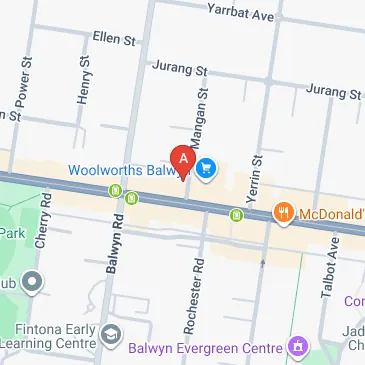Easy guide for reverse and parallel parking in Australia

One of the most practical abilities for every Australian road user is mastering the art of reverse parking, a crucial component of every driver's education course. Whether you're navigating busy CBD parking garages or shopping centre car parks, the ability to reverse park efficiently can save you time, reduce stress, and help you fit into spaces that would otherwise be inaccessible. According to a recent survey by the Australian Automobile Association, nearly 40% of drivers experience significant anxiety when attempting to reverse park in high-pressure situations. This comprehensive guide aims to demystify reverse parking techniques, helping both new and experienced drivers perfect their skills and approach parking with confidence. From multi-storey parking stations to tight parallel spots along busy streets, these techniques will transform how you approach parking forever.
Understanding Reverse Parking Basics
Reverse bay parking is most easily accomplished by approaching from a 90-degree angle, though many experienced drivers prefer the diagonal technique depending on the situation. As a daily commuter who's parked in hundreds of parking lots across Australia, I've found that reverse parking offers significant advantages when leaving tight spaces. The safest and most practical way to park your vehicle is in reverse, especially if you frequently utilise multi-storey or supermarket parking areas. The primary benefit is visibility – when it's time to leave, you can see oncoming traffic clearly rather than reversing blindly into busy lanes. Research from Prestige Driving School shows that reverse parking reduces parking-related accidents, demonstrating that this technique isn't just about convenience but safety as well. Before attempting any reverse parking manoeuvre, it's essential to understand the dimensions of your vehicle and be aware of your surroundings.

The 90-Degree Approach for Reverse Bay Parking
The 90-degree approach is the most common and straightforward method for reverse parking in standard parking spaces and designated parking bays. I've taught this method to dozens of nervous drivers who've gone on to master it with practice. To execute this technique effectively, follow these crucial steps:
- Drive past the parking space slowly, positioning your vehicle about 1.5 metres away from the parked cars.
- Stop when your back wheels are approximately aligned with the front of the parking space.
- Check all mirrors and blind spots thoroughly to ensure the area is clear of pedestrians and other vehicles.
- Turn your steering wheel fully toward the parking space while slowly reversing.
- Once your vehicle begins entering the space at a 45-degree angle, gradually straighten the wheel.
- Continue reversing slowly until your vehicle is centred within the space.
This technique works particularly well in shopping centre car parks where spaces are clearly marked and generously sized. According to Daniel Battaglia of Parking Made Easy, "Being able to manoeuvre into a parking space between two other vehicles with parallel parking is not just some cruel part of the learner test, but a genuinely useful skill that opens up a whole new range of parking opportunities." Practice makes perfect with this approach – consider using quiet times at local parking stations to hone your skills without pressure.
The Diagonal Approach for Reverse Parking
Once you've mastered the basic 90-degree reverse parking technique, you might want to try the diagonal approach. This alternative method is preferred by many professional drivers and those who find the standard technique challenging to visualise. The diagonal approach makes positioning problems more obvious and can be executed with these six steps:
- Choose your desired parking bay, ensuring there's adequate space to manoeuvre your vehicle.
- Position your car at approximately a 45-degree angle to the parking space you intend to use.
- Check your blind spots carefully and scan for pedestrians and other vehicles.
- Begin reversing slowly while turning your steering wheel to align your vehicle with the parking space.
- Use your side mirrors to guide your position, using the parallel lines on either side as reference points.
- Straighten your steering as you complete the manoeuvre, ensuring your vehicle is centred in the space.
Many drivers find this technique particularly useful in underground parking stations and tight parking spaces where precision is critical. Expert driving instructors recommend practising both approaches to determine which works best for your spatial awareness style. Data from the Australian Driver Trainers Association indicates that approximately 65% of drivers find the diagonal approach easier to master after initial training, making it worth adding to your parking repertoire.

Mastering Parallel Parking Techniques
Parallel parking is often considered the ultimate challenge for many drivers, yet it's an essential skill for urban driving in Australia's busy cities. As per Insurance Business Magazine, "According to the survey of over 1,000 car owners, 25% prefer to park elsewhere and walk or use public transport to avoid the stress of parallel parking." To master this technique, follow these steps:
- Find a suitable parking space that's approximately 1.5 times the length of your vehicle.
- Position your car parallel to the vehicle in front of the space, about 0.5-1 metre away.
- Reverse slowly while turning the steering wheel fully toward the kerb when your rear bumper aligns with the other vehicle's rear bumper.
- Once your car is at approximately a 45-degree angle to the kerb, straighten the front wheels and continue reversing.
- When your front passenger door is aligned with the rear bumper of the vehicle in front, turn the steering wheel away from the kerb while continuing to reverse slowly.
- Adjust your position by moving forward or backward as needed to centre your vehicle in the space.
The Australia Transport Safety Bureau notes that parking-related incidents account for nearly 20% of all insurance claims in metropolitan areas, with a significant portion occurring during parallel parking manoeuvres. Mastering this skill not only expands your parking options but potentially saves you from costly repairs and insurance claims. Remember that practice in low-pressure environments is key to building confidence with parallel parking.
Essential DOs and DON'Ts of Reverse Parking
After years of experience and observing countless parking attempts in Australian parking facilities and street parking areas, I've compiled these essential DOs and DON'Ts to help you park safely and efficiently:
DO:
- Always park in designated areas to avoid fines and potential towing of your vehicle.
- Position your car in well-lit areas with good visibility, particularly in public parking stations at night.
- Take your time when reversing, especially in busy car parks where pedestrians may be present.
- Use your indicators to signal your intentions to other drivers.
- Adjust your mirrors properly before attempting to reverse park.
DON'T:
- Park next to significantly larger vehicles that may obstruct your vision when exiting.
- Become frustrated or aggressive if another driver takes a parking spot you were waiting for.
- Rush the parking process even if you feel pressured by waiting vehicles.
- Forget to check for height restrictions when entering multi-storey car parks.
Following these guidelines will help reduce stress and make reverse parking a more pleasant experience for everyone. Parking Made Easy offers visual guides that can help you better understand proper technique and positioning for various parking scenarios.
.webp)
Conclusion: Perfecting Your Parking Skills
Mastering reverse and parallel parking takes practice, but the convenience and confidence it brings to your driving experience are well worth the effort. By following the techniques outlined in this guide, you'll transform challenging parking situations into simple, routine manoeuvres. Remember that even experienced drivers continue to refine their parking skills throughout their driving careers. The key is to practice in low-pressure environments until the movements become second nature. As parking technologies continue to evolve, these fundamental skills will remain valuable, complementing rather than replacing driver ability. Whether you're navigating crowded CBD parking spots or suburban shopping centre car parks, these techniques will serve you well. We encourage you to sign up free at Parking Made Easy to access more helpful driving guides, find convenient parking locations, and join our community of savvy Australian drivers. Share your own parking tips and experiences in the comments below, or let us know which technique worked best for you!
**About the Author:** Daniel Battaglia is the Founder and Chief Executive Officer at Parking Made Easy. Daniel has been working in the parking and urban mobility sector since 2012. With a passion for simplifying parking and helping people save money and time, Daniel provides expert insights into the benefits of finding, booking and renting car parking spaces with the help of Generative AI. For enquiries, you can reach Daniel directly at daniel@parkingmadeeasy.com.au.



Share